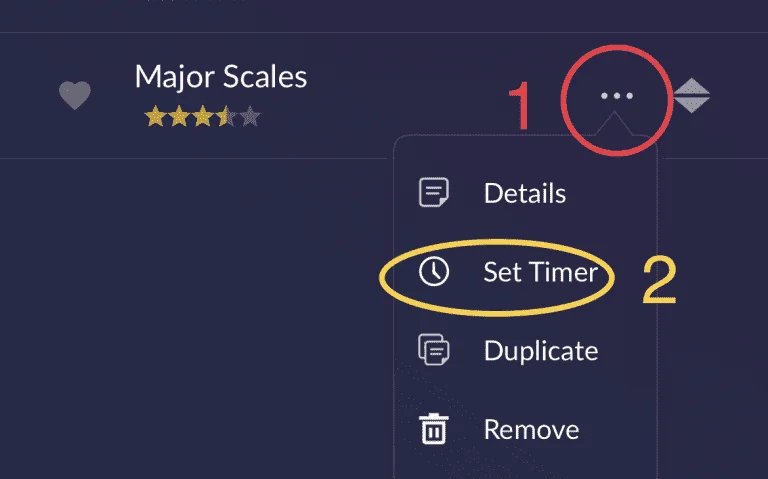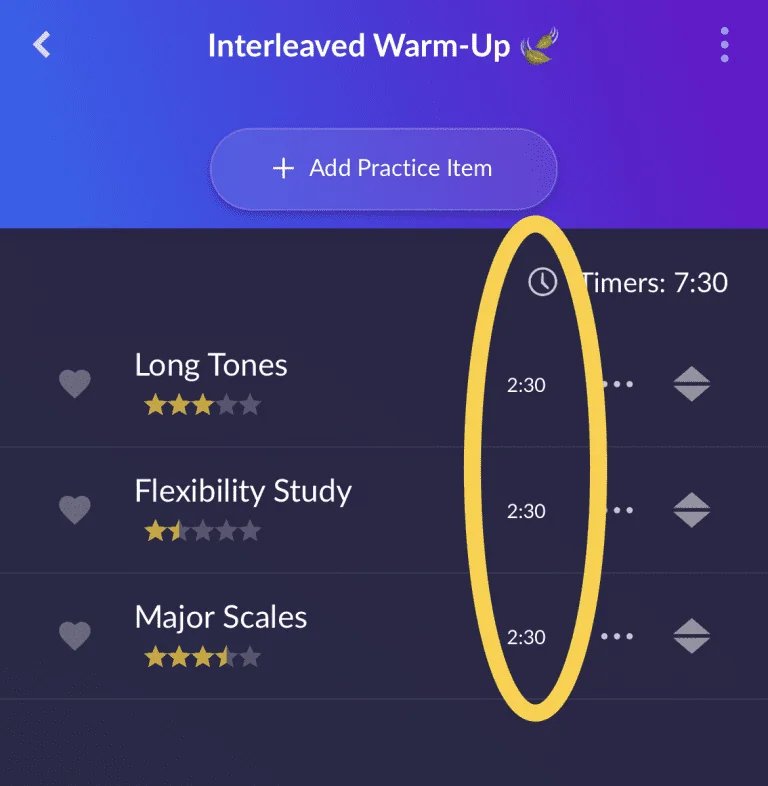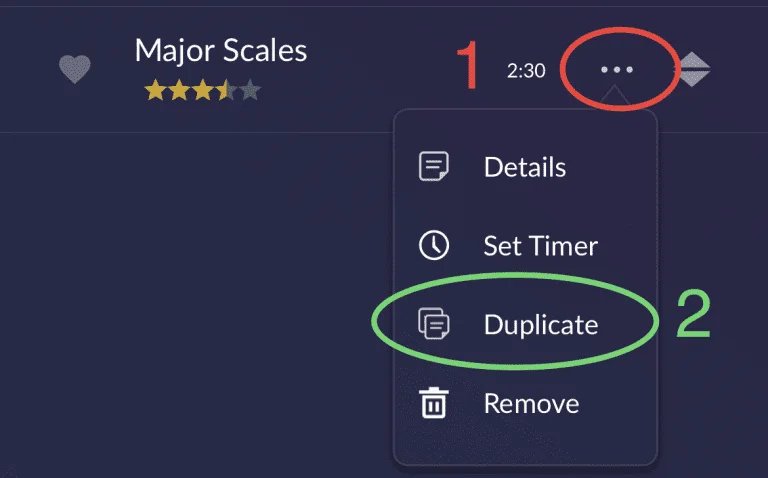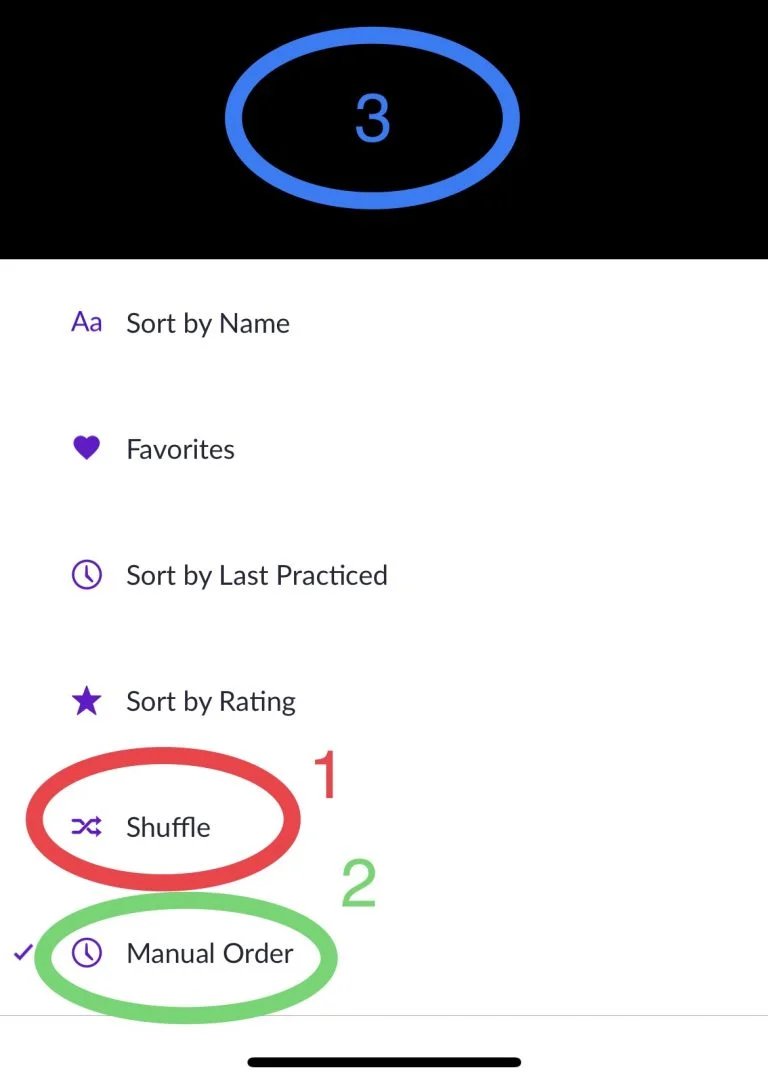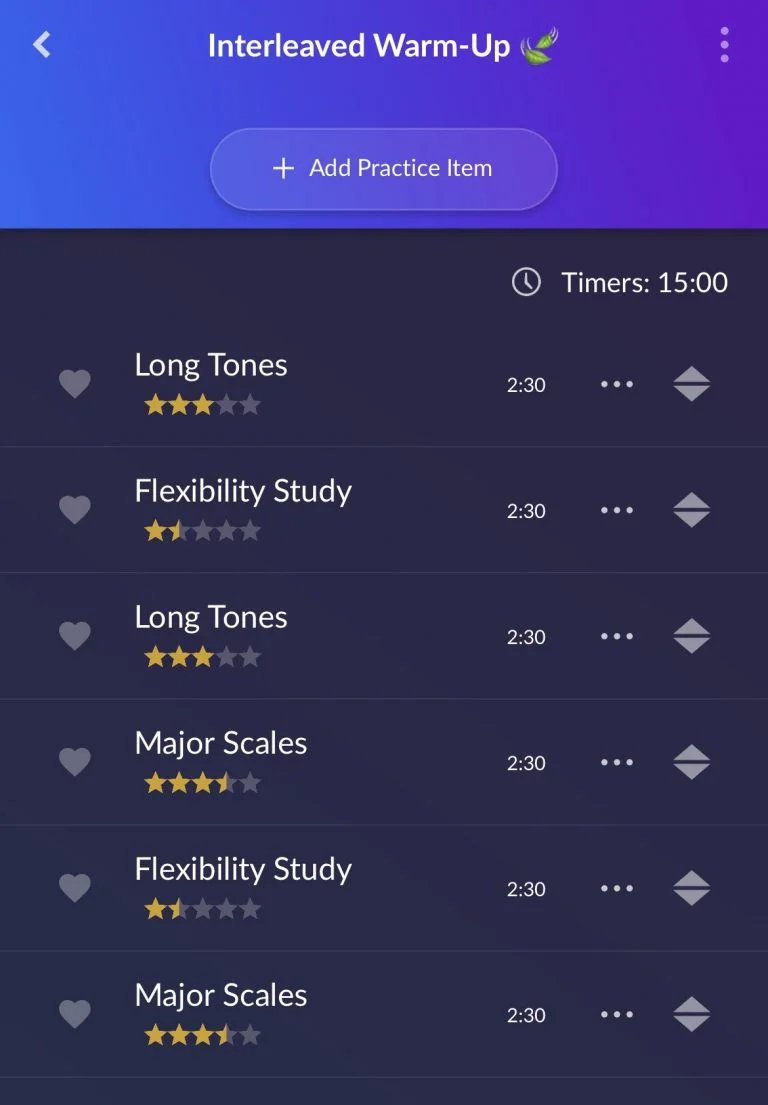Keep More Progress with Interleaved Practice
When we practice, we have to repeat material to refine our skills. Let’s make those repetitions smarter.
Say you’re working on learning your major scales for a college audition. How would you usually go about this? Maybe it would look something like this:
Play the C major scale 15 times
Play the F major scale 15 times
Play the Bb major scale 17 times (two extra because of flubs)
This should mean you can play those scales perfectly, right? Well, musicians know the truth. Just because you played it right 20 times yesterday, doesn’t mean you’ll play it right today.
How do we make sure our scales or other work are internalized? First, let’s look at what kind of practice strategy we usually use.
Massed vs. Interleaved
The example uses a strategy called Massed Practice. The American Psychological Association defines Massed Practice as “a learning procedure in which practice trials occur close together in time, either in a single lengthy session or in sessions separated by short intervals.” Basically, you keep practicing the same skill for long or short periods of time.
The issue here isn’t the time, but the act of practicing the same skill over and over. The solution is to mix up the skills you practice in a session.
Enter interleaved practice!
The University of Arizona says Interleaved practice is “is a process where students mix, or interleave, multiple subjects or topics while they study in order to improve their learning.” All you have to do to is mix up the skills and the order you practice them! Defining the different skills as their own practice is called chunking.
Put the Lime in the Coconut
Let’s make our example an interleaved session. First, we define our skill chunks. In this case, each scale is chunked as its own separate skill. To interleaved it, simply mix up the practice order. That would look like this:
C scale 2 times
F scale 2 times
Bb scale 2 times
C scale
F scale
Bb scale
And so on…
Looks pretty simple, because it is! It’s a scientifically verified and powerful practice strategy that has only recently been investigated (well… within the past 20 years).
One of the these studies, “The shuffling of math problems improves learning“, tries to see if interleaving improved test scores. To do this, college students were taught to solve different types of math problems, divided into two groups, and given practice packets to prepare for a test. One group was given a packet arranged for blocked practice, and the other was given an interleaved packet.
The researchers compared the students performance in practice and on the test. The massed practice students scored higher on the practice sessions (89% accuracy vs. 60%), but the interleaved students crushed the test (63% vs. the massed practicer’s 20%). Although the interleaved group seemed to struggle more in practice, they out performed the massed group by 315%.
This study highlights one issue you might face when you’re using interleaved practice: you might feel like you’re doing worse than before. But that’s okay! If you feel like you’re somewhat struggling, then you are on the right path.
How to Interleave on Modacity
Step 1 – Decide on a practice routine.
Start by making a short practice list of practice items. Warm-up routines and etude studies are a great starting place. The items will be the skill chunks that we mix together.
For this example, we’ll interleave this warm-up routine:
Long Tones
Flexibility Study
Major Scales
Step 2 – Think of how long the session will be.
The length of the practice session will determine how many times you practice each chunks. A key aspect of interleaving is practicing chunks in short periods of time. The average time for a chunk should be 1 – 3 minutes.
Another way is to divide the length of time you normally practice an item into 3 or 4.
We’re going to practice our warm-up routine for 15 minutes. In massed practice session, you would practice each item for 5 minutes. In our interleaved list, we’ll divide that time by 2, so each chunk gets 2 minutes and 30 seconds.
Step 3 – Use a Timer While You Practice
Using a timer is very important because it allows us to forget about time. This is essential for staying in flow while you practice. Why? Our brains can only handle a few actions at a time.
We have defined our “chunks”. Now, lets add a timer and make the repetitions.
Add a 2 minute and 30 second timer to the three items:
Then, “duplicate” each item one time:
Your list should look like this now:
Step 4 – And Mix it all Up!
We know that we need 2 repetitions of each practice item. For you written practice journal peeps, I’m going to give each item a letter:
A = Long Tones
B = Flexibility Study
D = Major Scales
Each letter represents practicing that skill for 2.5 minutes, so A represents a practice chunk of Long Tones for 2:30.
A massed practice session of these items would look like this:
AA BB CC
To interleave this, all we do is mix up the order. An interleaved session would look like this:
ABC ABC -or- ABC BAC ACB CBA
There’s an easy way to mix up the order on Modacity:
Tap on the Practice List Options at the top right, tap on Sort:
Then tap “Shuffle” then “Manual Order” and tap in the blank space.
Modacity will put the items in a random order!
If the same items are next to each other, you can drag and drop one to a new spot.
Just by mixing up the order, you created a very effective practice session. Make sure to take a few notes each time you practice to see what patterns work best for you.
Pro-tip: When that timer goes off, immediately stop and move on. Moving on prevents you from getting stuck in a frustration cycle with challenging items, and the constant change will refresh your focus.
Now you’re all set!
The principle of interleaved practice can be applied to all different kinds of practices. A simple and sure-fire way to add interleaving to your practice is to use Modacity! Modacity gives you all the tools you need to create interleaved practice sessions and use them again and again. That way, you can set-up your lists once and have them ready to go whenever it’s time to practice.




